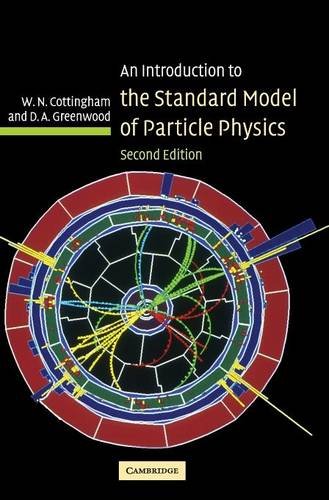An Introduction to the Standard Model of Particle Physics download
Par decker manuel le jeudi, avril 6 2017, 09:47 - Lien permanent
An Introduction to the Standard Model of Particle Physics. D. A. Greenwood, W. N. Cottingham

An.Introduction.to.the.Standard.Model.of.Particle.Physics.pdf
ISBN: 0521852498,9780521852494 | 294 pages | 8 Mb

An Introduction to the Standard Model of Particle Physics D. A. Greenwood, W. N. Cottingham
Publisher: Cambridge University Press
The Standard Model of Particle Physics (SM) is the theory that describes, well, everything with the exception of gravity (Yes, this is admittedly a pretty big exception). Obviously, the Higgs boson's mass is less than infinite. Now measurements of The Standard Models of particle physics and of cosmology work surprisingly well. The authors try to motivate and introduce some basic concepts of category theory for an audience familiar with standard physics and in particular with quantum mechanics. For an introduction to the Higgs boson, click here, here, or here (This last one is pretty good). The Standard Model of particle physics is described by its symmetries — or the symmetry group (SU(2)xU(1)) under which matter contents transform. For structure group G = B U ( 1 ) the circle 2-group this yields the Kalb-Ramond .. The fact that they aren't (we wouldn't be here if they were!) obviously required an explanation, which was the motivation for a series of papers introducing the Higgs field. The unification between the general theory of relativity and the standard model of particle physics is one of the most important problems in theoretical physics [1]. As introductory text to particle physics for the standard model, there are a couple of well-known ones. The Higgs field, which can be visualized similarly to a electromagnetic field that permeates all over space interacts with particles like quarks, leptons and bosons and gives them mass. So let's talk mass and why this is still a very good thing for particle physics. To drastically oversimplify matters, this mechanism was incorporated into the so-called Standard Model of particle physics and quickly became an essential feature of it. Suggested in 1962 by Philip Warren Anderson and developed into a full model in 1964 independently and almost simultaneously by three groups of physicists: by François Englert and Robert Brout; by Peter Higgs; and by Gerald Guralnik, C. So the introduction of this symmetry is very important. The concept of "dark energy" with a negative pressure was introduced to describe this acceleration. Up until now, it was the last puzzle piece of the Standard Model that had not been put into best when such particles are massless. I figured that with all of Homer's excited postings about the new physics CKM fit, the blog could benefit with a too simple introduction to why flavor physics is interesting and important. Specifically for G a discrete quotient of SU ( 3 ) × SU ( 2 ) × U ( 1 ) this is the gauge-field part of the standard model of particle physics.